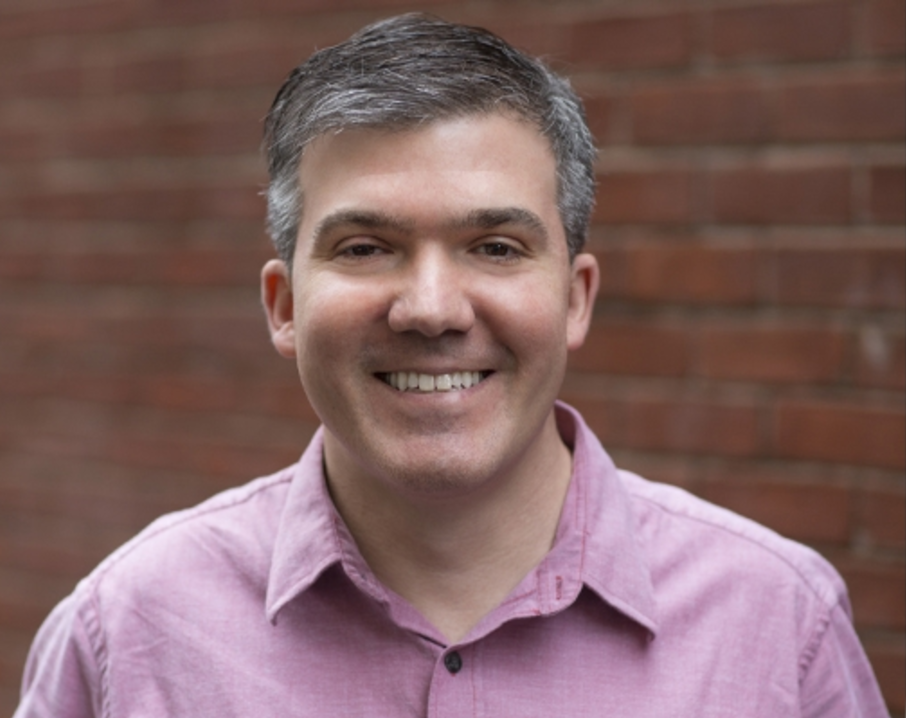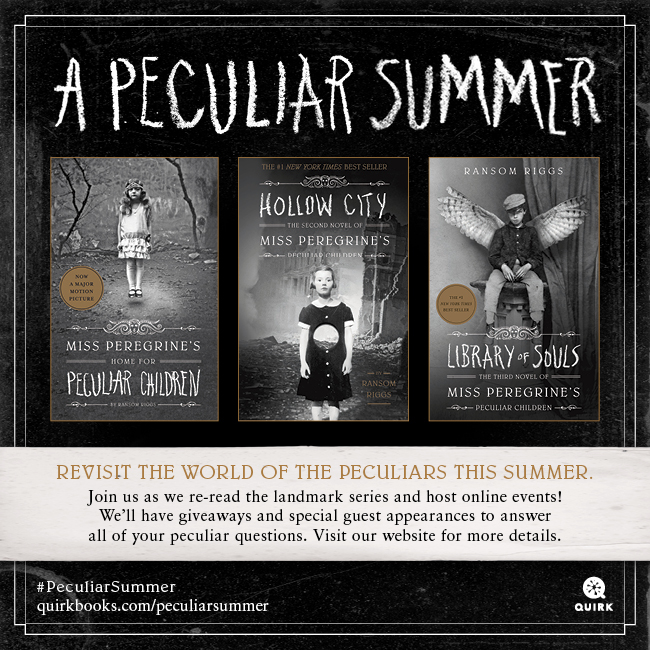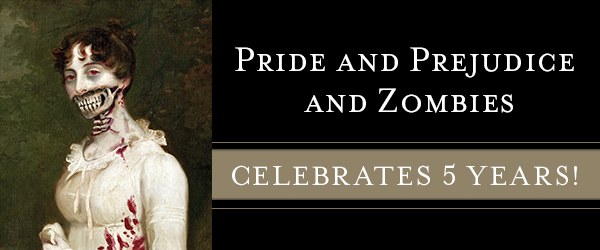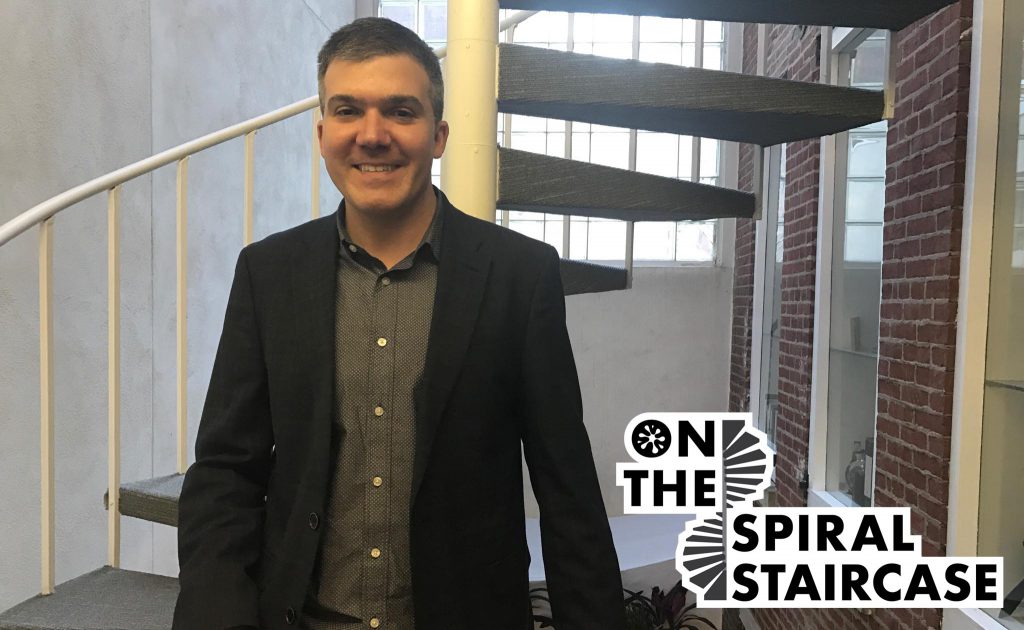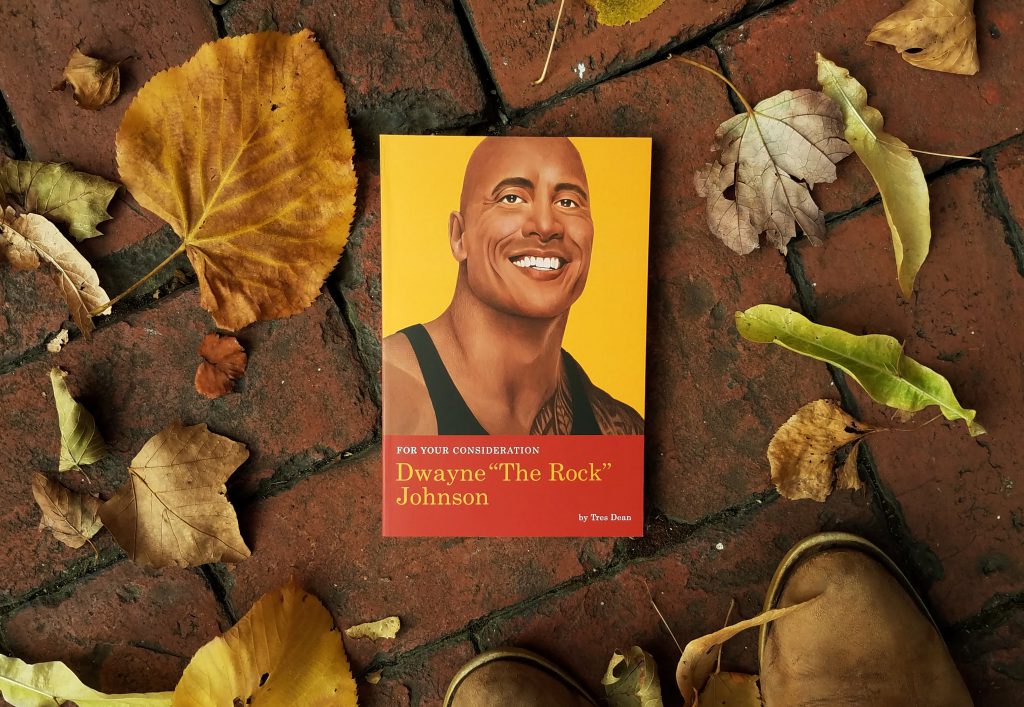#PeculiarSummer Q&A with Jason Rekulak
Photo credit: Courtney Apple
As part of our #PeculiarSummer, Quirk publisher Jason Rekulak answered questions from Twitter about the process of editing the blockbuster Miss Peregrine’s Home for Peculiar Children series. Here are Jason’s thoughts on some of the most popular questions.

Quirk Books: What was your role in the creation of Miss Peregrine's Home for Peculiar Children and can you tell us a little about how the book came to be?
Jason Rekulak: I was introduced to Ransom back in 2007. He wrote a fun nonfiction book for Quirk called The Sherlock Holmes Handbook, and then he directed a wonderful book trailer for our mash-up novel Sense and Sensibility and Sea Monsters. In the wake of that project, he wrote a very funny post for the Quirk blog titled “Leeches in Our Pants,” describing the perils of filming in a real lake on a very low budget.
And I remember loving all of those little projects and hoping that Ransom had an even bigger project inside him. One day I asked if he did, and he shared some pictures he had collected. They were weird old photographs that he found at flea markets and swap meets, and they all had interesting writing on the back; he was hoping to compile them into a book. (This project was eventually published by HarperCollins as Talking Pictures.) His other idea, the one I really liked, was to do an art book with photos of just the weird-looking kids, a sort of spooky Edward Gorey-ish book. And I love Edward Gorey so of course I was very excited. I think the initial working title was something like WEIRD KIDS.
At first he was going to write short poems to accompany the photos, but in Ransom’s mind the story kept getting bigger and bigger, and over several months of development, the project morphed into a novel. I still remember receiving an email from Ransom in which he wrote, “We can call it Miss Peregrine’s Home for Peculiar Children.” Writers often struggle to find just the right titles for their books, but he hit the bullseye very early on.
QB: It's probably hard to choose, but do you have a favorite book in the series?
JR: It is hard to choose! I like them all for different reasons. But since I did not answer the question, I will answer a different question: My favorite character in the entire series is Addison MacHenry, the talking dog who first appears in Hollow City. I would love to read a book about Addison’s life! What were his parents like? Where did he pick up his droll sense of humor? Where did he find his pipe? I’d love to know his origin story.
QB: What was it like to see a book you edited on the big screen?
JR: Very exciting! Especially since the actual day-to-day work of editing is not very glamorous. I spend a lot of uninterrupted time working at my desk, hunched over manuscripts and eating messy sandwiches. I was not invited to visit the set, and I certainly had no involvement in the production of the film. But that doesn’t stop my friends and neighbors from thinking I’m some kind of Hollywood big shot. I get to say things like, “Everyone wanted David Bowie but he was unavailable,” and to people who don’t know any better, it sounds like I’m part of that Everyone. But I was invited to the premiere and it was a very special night.
QB: This was the first YA book you edited. Is editing a YA novel different from books for adults?
JR: I don’t think of myself as a YA editor, and I approached these books with the goal of publishing them to a general audience—not just teens but adults, too, readers of all ages. There are three generations of characters, so it’s fun for the whole family. That said, I imagine most YA editors ask the same questions that all fiction editors ask: What does this character want? Why should the reader care about this character? I’m guessing it’s not very different at all.
QB: Books change a lot from that first nugget of an idea to the final product. How different was Miss Peregrine at the start?
JR: I remember a very early draft that was in a sort of epistolary format—the story opened with Jacob already on the island, I think, and he was writing letters to a friend back home. But Ransom abandoned that structure early in the process. There was a time when I thought the book would have more of a horror/supernatural storyline, but Ransom veered toward fantasy, and thank goodness for that. Oh! Here’s one more interesting thing I remember: At the time, Ransom was photographing a lot of ruined buildings, and I believe one early draft of the novel had interior photos of Miss Peregrine’s dilapidated mansion. But at some point it was decided these photos didn’t belong in the book; they looked too contemporary and different. We agreed that the photos should be old-timey portraits. All the other stuff had to go.
QB: Can you tell us about the editorial process of bringing a book to life?
JR: The process varies from book to book and from author to author. I have found that most editorial problems can be resolved by asking the author, “What are you trying to do with this sentence/paragraph/page/scene/chapter?” Or “How do you want the reader to respond to this?” (Which is basically two different ways of asking the same question.) If the writer struggles to answer that question, he/she is usually smart enough to know they ought to be able to answer, and that usually leads to a productive discussion. If I had to reduce the process to three steps, they are basically: Ask a lot of questions, highlight all the things I really like (because authors, like the rest of us, thrive on positive feedback), and then try to stay out of the way!
QB: What did you enjoy most about working on the Miss Peregrine series?
JR: For me, the development of any book is always the best part. I really loved reading the early drafts of the first novel and watching Ransom bring the story into focus. And I remember going through his first collection of photos, all of these crazy black-and-white images that were going to illustrate the book. I’d share them with every person who walked into my office: “Look at this! Look at these crazy clown children!” It was really exciting. I’m not saying I knew the book was going to be a hit, but I knew I was seeing something unprecedented.
This will seem hard to believe, but the first Miss Peregrine novel arrived without a lot of fanfare. The Borders stores had just gone out of business, and the book business was in a strange place. The iPad was newly on the market, and retailers were very scared of e-books. Nobody wanted to embrace anything, and we were struggling to get people excited about Miss Peregrine. I remember receiving advance copies from the printer and thinking to myself, “This feels so cool and new. Why isn’t the world making a big deal about this novel?”
And then, maybe three or four weeks later, the book just exploded; the Internet suddenly went bananas for Miss Peregrine. The book debuted at #5 on the New York Times list, we were scrambling to reprint, everything was going crazy, and that was all very exciting and very gratifying. But in spite of all the success, the development of the first book is still my favorite part of the whole Miss Peregrine’s experience, and the part I will likely always remember.
